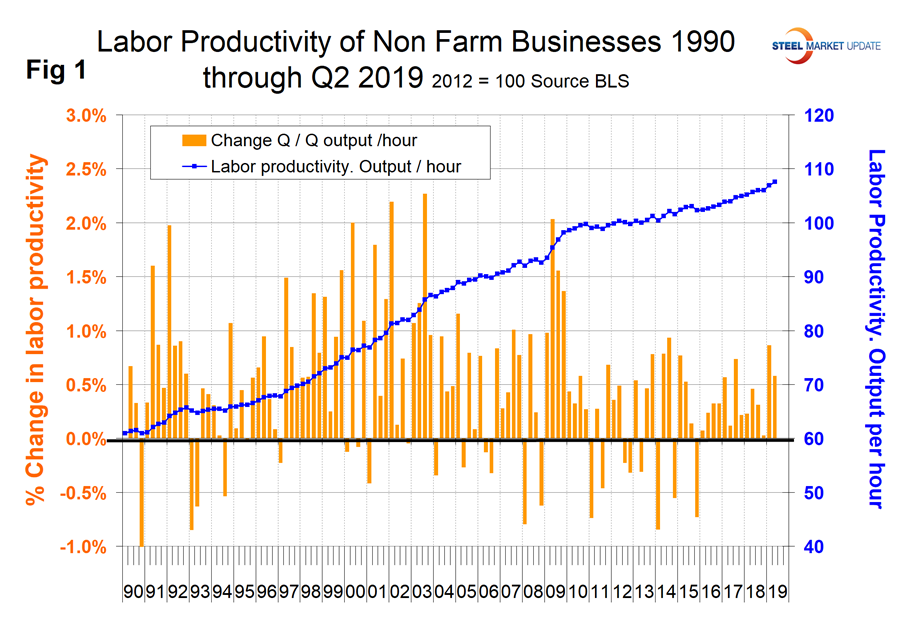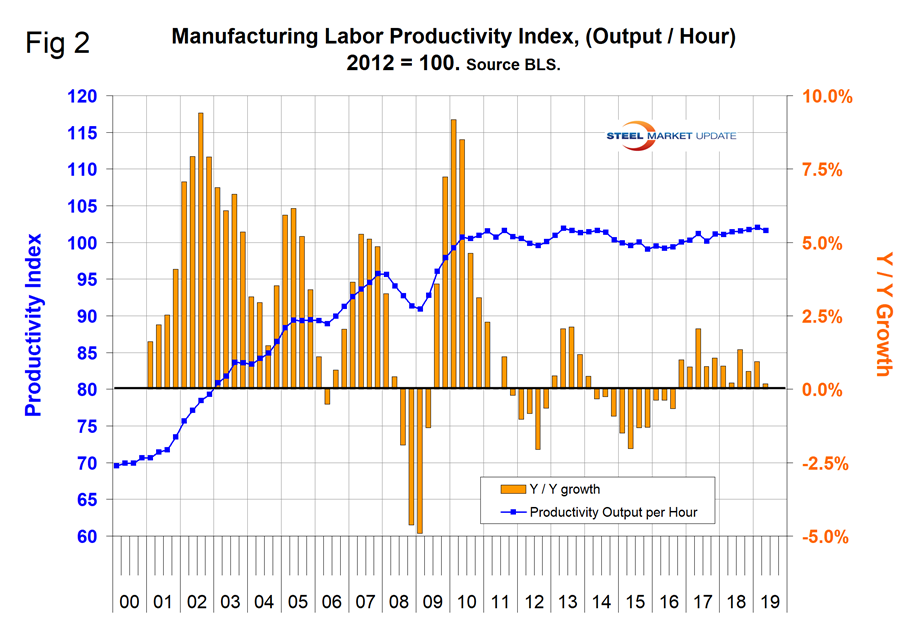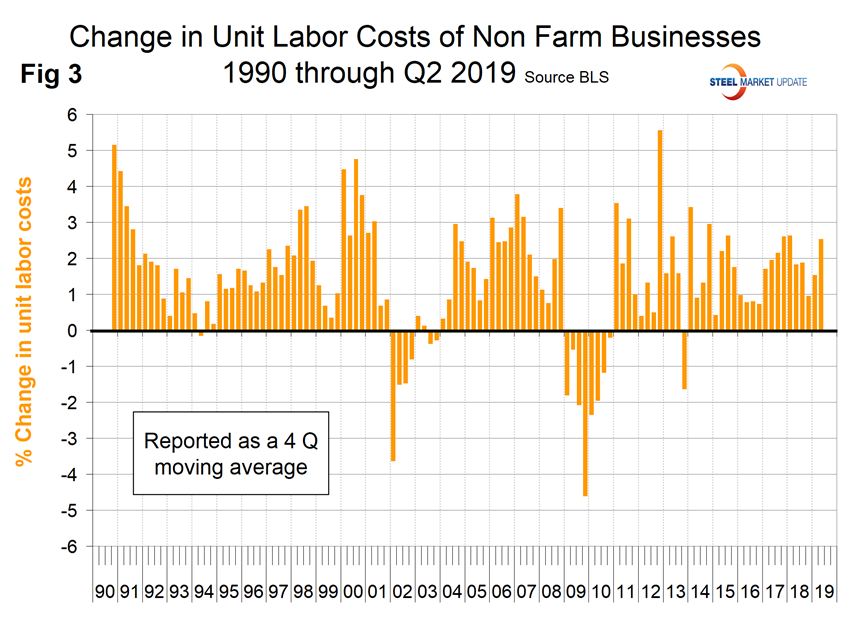Economy

BLS Reports Strong Productivity Growth in the Second Quarter
Written by Tim Triplett
August 20, 2019
The labor productivity of nonfarm businesses grew by 2.3 percent in the second quarter of 2019. The average of the last six quarters has been 0.40 percent. Unit labor costs increased 2.5 percent year over year, according to Steel Market Update’s latest analysis of Bureau of Labor Statistics (BLS) data.
Unit labor costs and productivity changes are reported quarterly by the BLS and results for Q2 2019 were released last week. All quarterly percent changes in this release are seasonally adjusted annual rates. This basic information is useful to better understand the steel market. One way of looking at GDP is that it is the growth of the working age population multiplied by their productivity. Steel consumption is correlated with the growth of GDP.
Figure 1 shows labor productivity in output per hour as an index based on 2012 = 100 and the quarterly change for nonfarm businesses in total. Labor productivity, or output per hour, is calculated by dividing an index of real output by an index of hours worked by all persons, including employees, proprietors, and unpaid family workers. The BLS reported that nonfarm business sector labor productivity increased 2.3 percent in the second quarter of 2019, as output increased 1.9 percent and hours worked decreased 0.4 percent. From the second quarter of 2018 to the second quarter of 2019, productivity increased 1.8 percent, reflecting a 2.6-percent increase in output and a 0.8-percent increase in hours worked. There has been a slight upward trend in productivity since the beginning of 2016.

The manufacturing component of the big picture had a poor productivity performance in the second quarter of 2019. The BLS reported: “Manufacturing sector labor productivity decreased 1.6 percent in the second quarter of 2019, as output decreased 2.1 percent and hours worked declined 0.5 percent. Productivity declined 0.9 percent in the durable manufacturing sector, reflecting a 1.8-percent decrease in output and a 0.9-percent decrease in hours worked.” Figure 2 shows the productivity index for manufacturing industries with the year-over-year gain. The productivity growth of manufacturing has been stalled for eight and a half years following the post-recessionary recovery.

Unit labor costs in the nonfarm business sector increased 2.4 percent in the second quarter of 2019, and increased 2.5 percent over the last four quarters (Figure 3). The BLS calculates unit labor costs as the ratio of hourly compensation to labor productivity. Increases in hourly compensation tend to increase unit labor costs, and increases in output per hour tend to reduce them.

Unit labor costs in the manufacturing sector increased 5.8 percent in the second quarter of 2019, and increased 4.3 percent from the same quarter a year ago.

Tim Triplett
Read more from Tim TriplettLatest in Economy

Steel groups welcome passage of budget bill
Steel trade groups praised the passage of the Big Beautiful Bill (BBB) in Congress on Thursday.

Industry groups praise Senate for passing tax and budget bill
The Steel Manufacturers Association and the American Iron and Steel Institute applauded the tax provisions included in the Senate's tax and budget reconciliation bill.

Chicago PMI dips 0.1 points in June
The Chicago Purchasing Managers Index (PMI) slipped 0.1 points to 40.4 points, in June.

Multi-family pullback drives housing starts to 5-year low in May
US housing starts tumbled in May to a five-year low, according to figures recently released by the US Census Bureau.

Architecture firms still struggling, ABI data shows
Architecture firms reported a modest improvement in billings through May, yet business conditions remained soft, according to the latest Architecture Billings Index (ABI) release from the American Institute of Architects (AIA) and Deltek.
